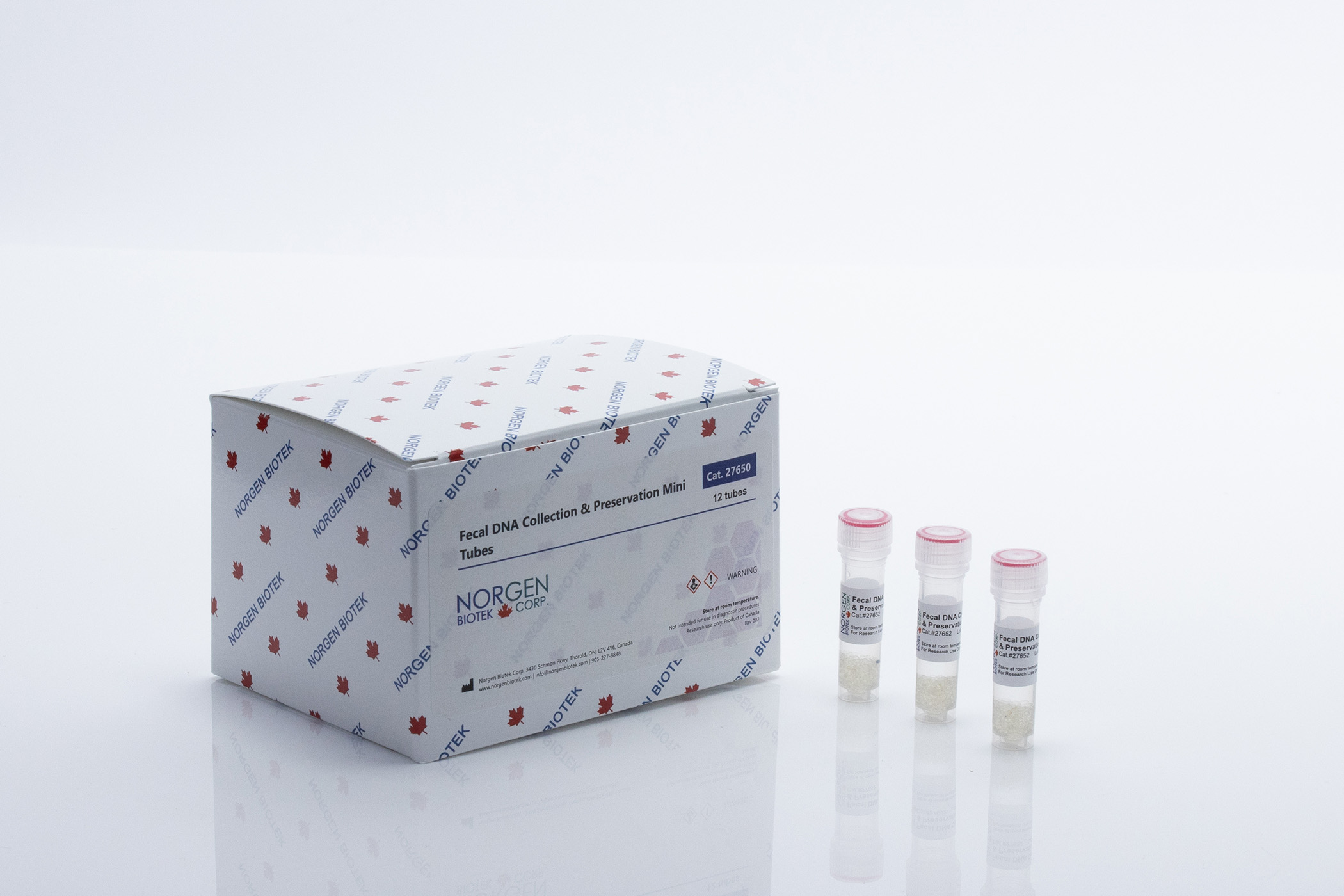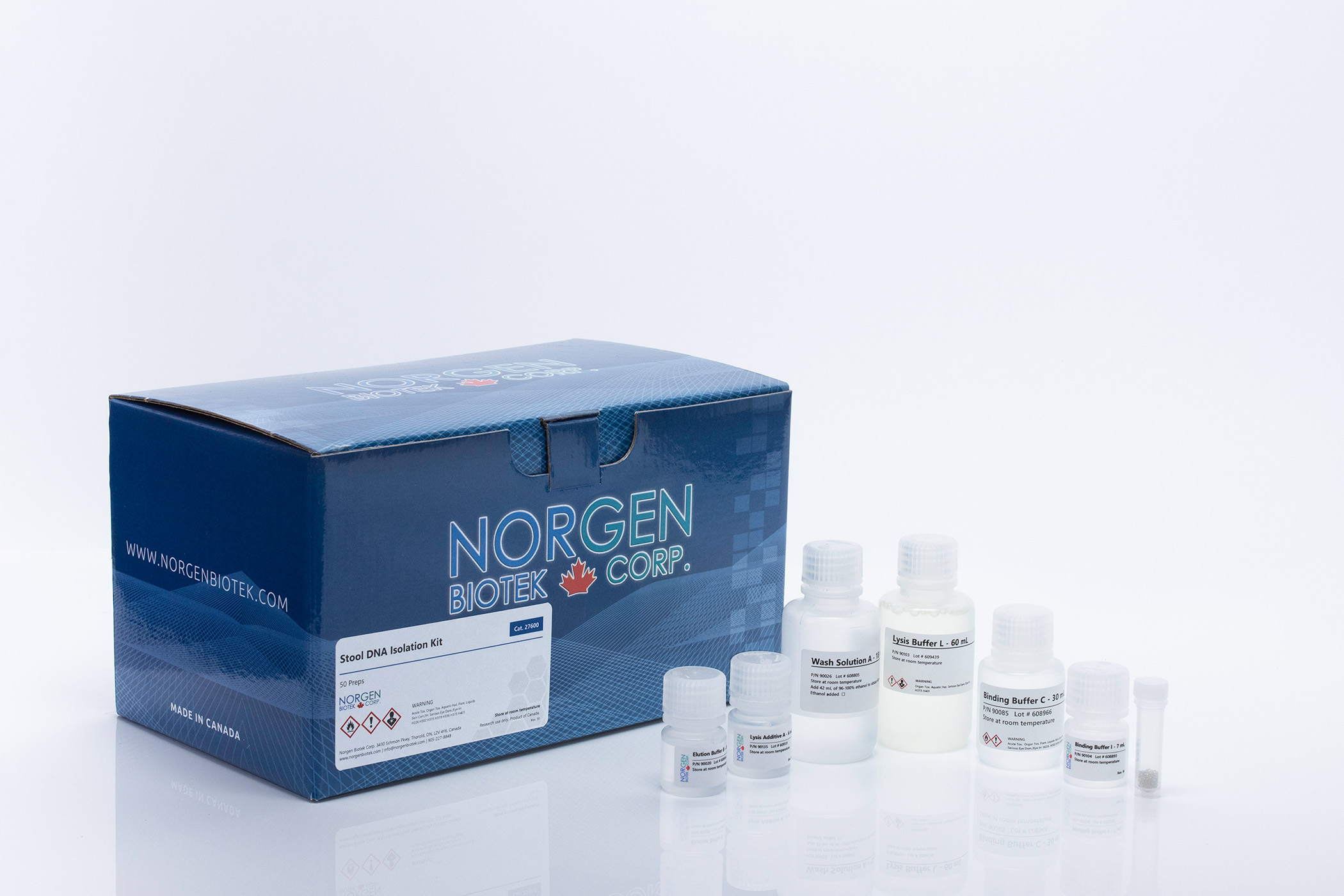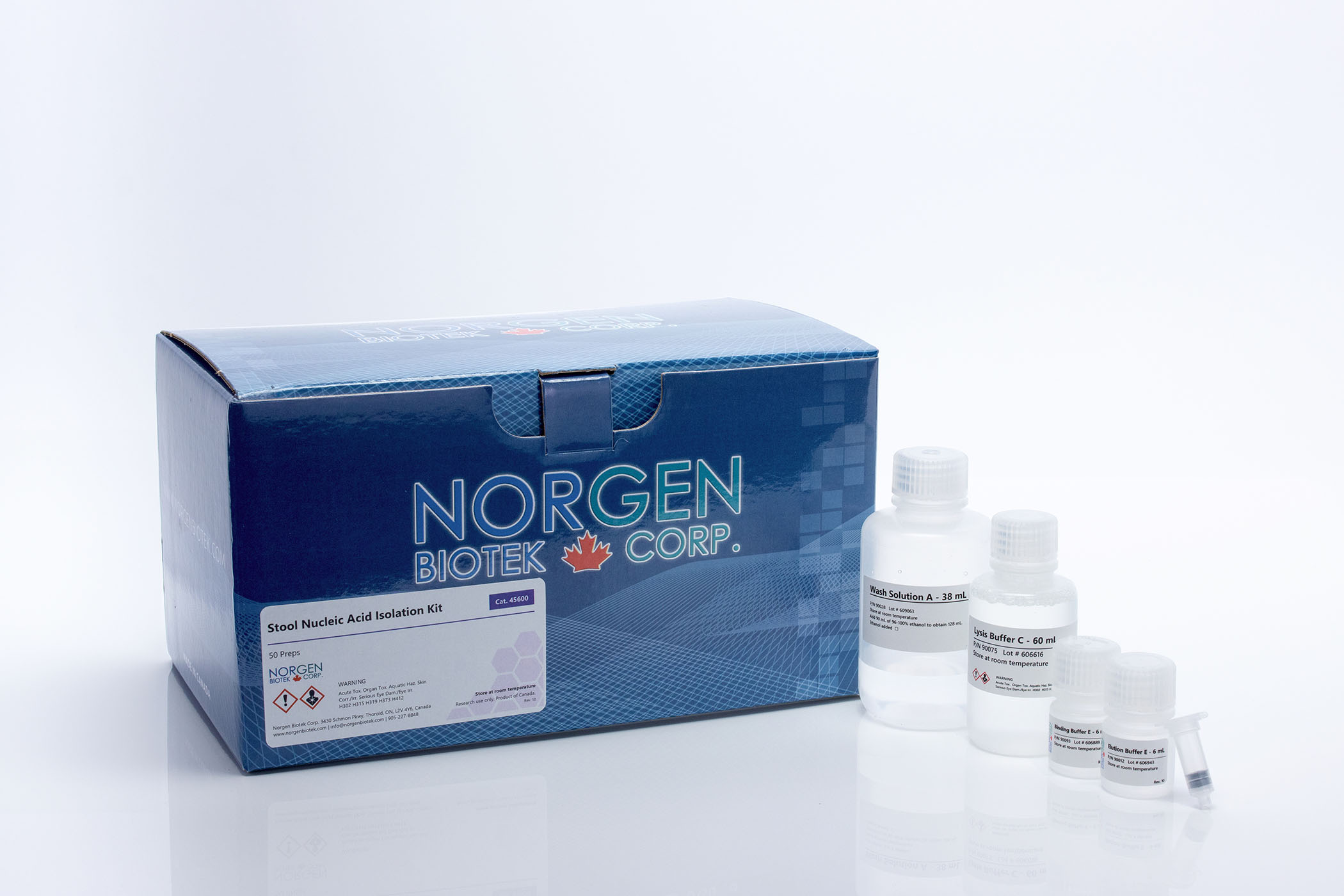Stool Total RNA Purification Kit


Stool Total RNA Purification Kit
Register today to receive an exclusive 15% off* on your first order.
Supporting Data
Figure 1. High yields of stool total RNA were purified from 200 mg of human stool using Norgen's Stool RNA Purification Kit and a leading competitor's kit, in triplicate. For analysis, 7.5 µL of each 75 µL elution was loaded on a 1.2 % 1x MOPS formaldehyde-agarose gel. Norgen's kit was found to have a higher yield of RNA, isolated from 200 mg of human infant stool.
Figure 2. Yield and Quality of Purified Stool RNA. Total RNA was isolated from 200 mg of human stool using Norgen's Stool RNA Purification Kit and a leading competitor kit. Comparisons were then made based on yield, and A260:A280/A260:A230 ratios measured using the NanoVue Plus™. In Panel A it can be seen that both kits isolated RNA with high A260:A280 ratios (all samples were found to be above 1.8 and below 2.2). In Panel B, Norgen's kit was found to isolate RNA with a high A260:A230 (with all samples once again falling in the 1.8-2.2 range). The competitor kit, however, was found to isolate RNA with extremely low A260:A230 ratios, with none of the samples displaying a A260:A230 ratio higher than 0.20. The results in Panel C are in agreement with the gel photo from Figure 1, and Norgen's kit was found to isolate higher amounts of RNA, with an average yield of 14.58 µg, compared to the competitor’s average of 12.26 µg.
Figure 3. Detection of Bacterial Stool RNA using 16S Primers. Total stool RNA was isolated from 200 mg human stool samples using Norgen's Stool RNA Purification Kit and a leading competitor’s kit. Five microliters of purified RNA was used in a 20 µL reverse-transcription reaction using Invitrogen's Superscript III system with 16S reverse primers. The cDNA generated was then used in a qPCR reaction involving Norgen's 2X PCR Mastermix spiked with SYBR green (Bio-Rad), using 0.3µM of primers against bacterial 16S. As can be seen in the amplification plot, Norgen's kit outperformed the leading competitor's kit by on average 1.5 Ct values. This indicates that Norgen isolated higher quality and yields of RNA from stool, that can be used in an array of downstream applications.
|
Kit Specifications
|
|
|
Maximum Stool Input
|
200 mg (fresh/frozen stool) or 400 μL (preserved stool)
|
|
Type of Stool Processed
|
Preserved, fresh, and frozen stool from humans and animals
|
|
Maximum Column Binding Capacity
|
50 μg
|
| Maximum Column Loading Volume |
600 μL
|
| Time to Complete 10 Purifications |
30 minutes
|
Storage Conditions and Product Stability
All solutions should be kept tightly sealed and stored at room temperature. This kit is stable for 2 years after the date of shipment.
Component | Cat. 49500 (50 preps) |
|---|---|
Lysis Buffer C | 60 mL |
Wash Solution A | 38 mL |
Elution Buffer E | 6 mL |
Bead Tubes | 50 |
Spin Columns | 50 |
Collection Tubes | 50 |
Elution Tubes (1.7 mL) | 50 |
Product Insert | 1 |
Documentation
Videos
FAQs Unpacked: Stool Total RNA Purification Kit (Cat. 49500)
FAQs
Spin Column
Poor RNA recovery could be due to one or more of the following:
- Homogenization was incomplete.
Depending on the sample, further vortexing with the flat bed vortex or bead beater equipment may be required. However, it is not recommended to increase the vortex time to longer than 10 minutes at maximum speed. - Column has become clogged.
Do not exceed the recommended input amount of 200 mg of stool. The amount of starting material may need to be decreased if the column shows clogging below the recommended levels. - An alternative Elution Buffer was used.
It is recommended that the Elution Buffer E supplied with this kit be used for maximum RNA recovery. - Ethanol was not added to the lysate.
Ensure that the appropriate amount of ethanol is added to the lysate before binding to the column. - Ethanol was not added to the Wash Solution A.
Ensure that 90 mL of 96-100% ethanol is added to the supplied Wash Solution A prior to use.
RNA can be degraded due to following factors:
- RNase contamination.
RNases may be introduced during the use of the kit. Ensure proper procedures are followed when working with RNA. Please refer to “Working with RNA” at the beginning of the product protocol documentation. - Improper storage of the purified RNA.
For short term storage RNA samples may be stored at –20°C for a few days. It is recommended that samples be stored at –70°C for longer term storage. - DNase used may not be RNAse-free.
Ensure that the DNase being used for the optional On Column DNA Removal step is RNase-free, in order to prevent possible problems with RNA degradation.
If the RNA does not perform well in downstream applications, It may be due to one or more of the following:
- RNA was not washed with Binding Buffer B and Wash solution A.
Traces of humic acids and salt from the binding step may remain in the sample if the column is not washed with Binding Buffer B and 2 times with Wash Solution A. Salt may interfere with downstream applications, and thus must be washed from the column. - Ethanol carryover.
Ensure that the dry spin under the Column Wash procedure is performed, in order to remove traces of ethanol prior to elution. Ethanol is known to interfere with many downstream applications.
Yes, the Stool Total RNA Purification Kit is compatible with samples preserved with Norgen's stool preservative. Please refer to our Application Note here
Yes, our Stool Total RNA Purification kit has been used successfully with bacterial pellets resuspended and stored in RNAlater®. Please contact our technical support team at support@norgenbiotek.com and ask for reference publications.




